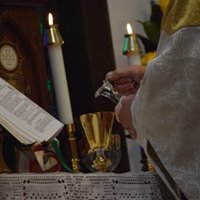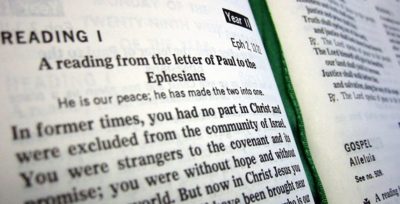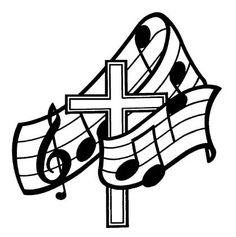The American Prayer Book Eucharistic Rite
THE 1928 BOOK OF COMMON PRAYER – Part 1
 The Book of Common Prayer has a history of more than four and a half centuries of daily liturgical use and is in direct and organic continuity with the beliefs, practices and liturgies of the undivided Church in the West. It is now time to take an in-depth look at this Liturgy.
The Book of Common Prayer has a history of more than four and a half centuries of daily liturgical use and is in direct and organic continuity with the beliefs, practices and liturgies of the undivided Church in the West. It is now time to take an in-depth look at this Liturgy.
The Eucharistic Liturgy of the 1928 Book of Common Prayer opens with the Collect for Purity. This Collect was part of the celebrant’s preparation in the Sarum Sacramentary (c. 1085), but its use dates back to at least AD 804. In the Sarum Sacramentary it appears in Latin: “Deus Cui omne cor patet, et omnis voluntas loquitur, et Quem nullum latet secretum, purifica per infusionem Sancti Spiritus cogitationes cordis nostri; ut Te perfecte diligirere, et digne laudare mereamur. Per Chrustum Dominum nostrum. Amen.
The Collect is found in the sacramentary of Alcuin (c. 735-804), the prime minister of Charlemagne, and the reviser of the Roman Rite in the Frankish kingdom. It is unknown whether Alcuin composed the Collect himself or took it from an earlier Service book that is no longer extant, but we know that it has been used for more than twelve hundred years. The Collect for Purity continues to be a prayer of preparation in the Book of Common Prayer. It remains as part of the preparation for the celebration of the Sacred Mysteries and is said before the altar.
The Decalogue entered the Book of Common Prayer in 1552, and has remained in the Anglican Rite ever since. However, as we have seen, its use was no innovation. The Ten Commandments were used liturgically in the early Church in general and in the British Isles in particular, so there is precedent for its use. “It is certain that Cranmer accepted the Medieval view that the Kyrie was penitential… It may be that he was desirous of including in the liturgy the regular recitation of the commandments, along with the Creed and the Lord’s Prayer, as one of the three things Christians ought especially ‘to know and believe to their souls health.'”21
Blessed Charles Grafton (AD 1830-1912), bishop of Fon du Lac, Wisconsin wrote, “The recitation of the Decalogue in this place is a peculiarity of the Anglican rite. Let us not therefore disparage it, but rather glorify it; for may we not humbly believe that in the development of the Liturgy each portion of Christendom bears its own witness to the faith and has its own special liturgical glories? Our Liturgy, beginning with the Decalogue and omitting the Gloria in Excelsis, is in striking contrast with the Roman… and there is something very beautiful in beginning the drama of Christ’s life and death with the angel’s song in Bethlehem. But yet it is a grand idea – a grander one, we venture to think – to throw the mind first of all back behind the scene of Bethlehem into the eternal counsels themselves and into the presence of the ever-blessed Trinity. The Decalogue does this. It places us before the awful grandeur of God Himself, and enshrines us in the splendour of His glory” (The Mystical Meaning of the Liturgy).
The Summary of the Law is taken from Holy Scripture, and was first used in the Non-Jurors Prayer Book of 1718. It is found in the Scottish Liturgy of 1764, was part of the first American Prayer Book in 1789, and remains in the 1928 Book of Common Prayer. It is also found in the English 1928 Proposed Book and in the Scottish 1929 Book of Common Prayer, among others. The Summary of the Law may be used in addition to the Decalogue or as a substitute for it, provided that the Decalogue is used at least one Sunday in each month.
The Kyries may be used in the three-fold form as found in the Book of Common Prayer or in the nine-fold form as found in the 1940 Hymnal, which is also an authorized liturgical book of the American Church. “The number of repetitions of the Kyrie [in the early Church] was not constant, though three seems always to have been the most usual, and the ninefold Kyrie now familiar in the west was a natural and obviously symbolic number.”22
The Gloria in excelsis had only come into use by priests on Sundays in the twelfth century, and with the understanding of the Kyries as being penitential, it broke up the natural progression of the Liturgy. The ancient Roman Rite did not include the Gloria in excelsis, and when the Gloria first made its appearance in the Roman Rite it was used only in pontifical celebrations by bishops at Christmas. To avoid breaking up the natural progression of the Liturgy, and in order to return to primitive liturgical practice, the Gloria was removed from the ante-communion (Liturgy of the Word). Not wanting to eliminate this ancient hymn of praise that had come into the West from the Eastern Liturgy of the Hours, the Anglican Church moved it toward the end of the Liturgy where it serves beautifully as a fixed Post Communion Anthem.
The Collect of the Day, along with other Collects, and the Epistle and Gospel lessons follow the Kyries. The term “Collect” is a survival in the Anglican Liturgy from the ancient Gallican Rites. In the Roman Rite the word used is simply Oratio: the Prayer. “The collect is therefore the first variable prayer of the mass. It is strictly a western feature, and in its pure form is direct and brief, consisting of an address, a petition and an adjuration.”23
“This section of variable prayers [collects] and lessons used at the Holy Communion on the several Sundays and holy days of the Church Year is called the ‘Propers’ of the Eucharist; and, with the few Proper Prefaces…, they carry on in our Prayer Book the tradition of the Western Church, developed in the fourth century, of relating significant portions of the Eucharistic liturgy to the seasonal themes of the movable and immovable feasts and fasts.”24 They are for the most part identical to what is found in Sacramentaries and Missals that had been in use throughout the Western Church for centuries, and were still being used at the time of the Reformation. “In the case of the Collects the Prayer Book substitutions were all designed to eliminate from the liturgy certain offensive doctrines of the medieval Church – notably those enshrined in the Saints’ Days Collects respecting the ‘works of supererogation’ of the saints whose merits might be applied to our benefit by their intercession.”25






